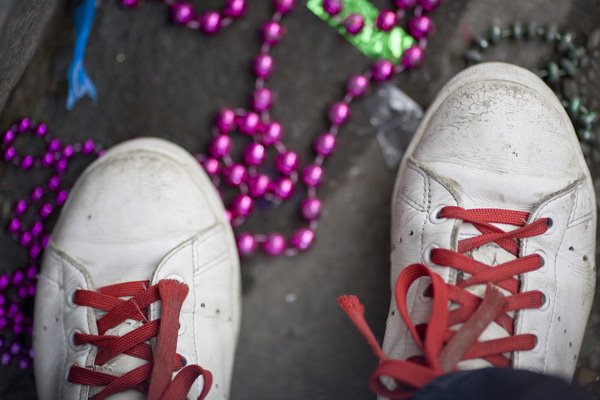
I spoke with my friend Patti before I left for Haiti. She and I usually communicate by email and catch up in person when I'm in New York, but I decided to touch base with her before returning to Haiti so I called her from the airport before I left. We had a wonderful conversation. She told me about her upcoming trip to London and we made plans to meet in New York. She was worried about me returning to Haiti, when it turns out I should have been worried about her. Patti had a terrible accident and passed away on March 18. The Daily News falsely reported her death a suicide. Sure, Patti had dark thoughts from time to time. I do too, but the irresponsibility of saying she killed herself when the police ruled her death an accident is journalism at its worst.
Eight years ago, Patti lost the use of her legs, but she got around more than most people. I never thought of her as handicapped. She seemed to take all hardship in stride. She relished life. We met after she read an article about my work. She came to buy a piece for Danny. She became one of my favorite critics, often seeing things in my work I hadn't thought of.
My work in Haiti resonated with Patti. She and her husband Danny sent funds to support my work here before I sought them. When I told her how I gave a Haitian driver for the military $20 so he could get a charger for his cell phone (his was lost under his collapsed home) and then e-mailed his family in the States to explain why they hadn't heard from him, how I heard back from them within minutes with thanks for word of him, she asked me to give him an additional $20. Patti understood the value of the kindness of strangers.
Patti would take me for extravagant lunches when we met over the years. Although I usually don't drink during the day, I could never turn her down when she asked me with sparkling eyes if I wanted another one. Our lunches were always a special occasion. We would talk about topics from A to Z . Returning to New York City without connecting with Patti again will be a great loss in my life..
In the next days, I'm off to Jacmel, where I will try to locate the friends of my friend Flo. Here is an email Patti wrote to me after reading my Homage to Flo McGarrell who died on Jan. 12, a victim of the Haitian earthquake:
It's a very sad story. I salute him for living the way he wanted to, and that was surely very attractive to a lot of people. It's all just such a loss of life and the after lives even for the survivors is sure to be very difficult. The amount of struggle and competition for such basic human essentials is completely ungodly and cruel. I dislike knowing about such things only through the media. It just doesn't seem real and therefore it is difficult to feel what I feel to be real reactions to exactly what it may be like.
I feel like a little chicken hiding over here all safe and comfortable. Not that I would ever want to actually experience such atrocities even in any lesser form, but I think it is part of my love and respect for you, that you have been and do go so close. I think in another life I would definitely like to at least try to make that effort to know some things better, first hand. I cannot imagine what it could be like for Flo's mom, having his body returned and going through such a process has got to be completely emotionally devastating. All I keep thinking is that he must have been a very powerful life force and surely not extinguished quite so easily as his body could be. He must be reconfiguring into some form and still burning brightly. He doesn't seem to have been the type to be easily contained for long. I'd love to see you do a book about him.
Let me know when you are here or on the way. All the best to You, your mom, your dad,
Patti
Images from the National Cemetery in Port-au-Prince, Haiti

























